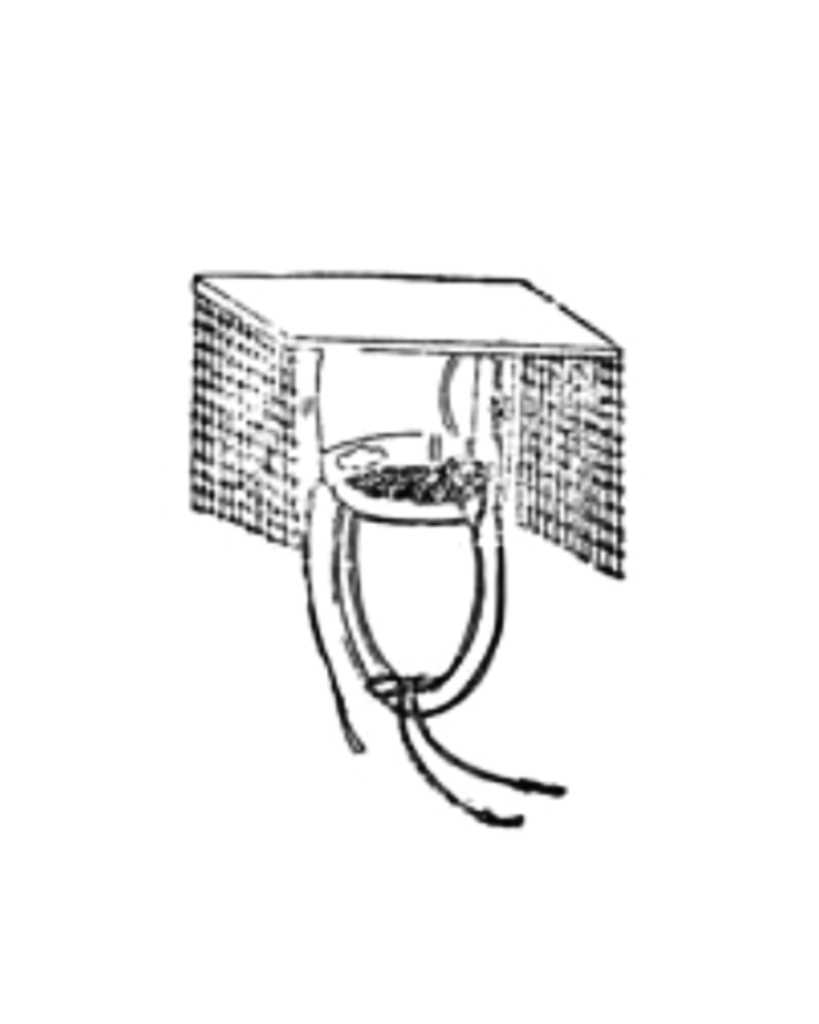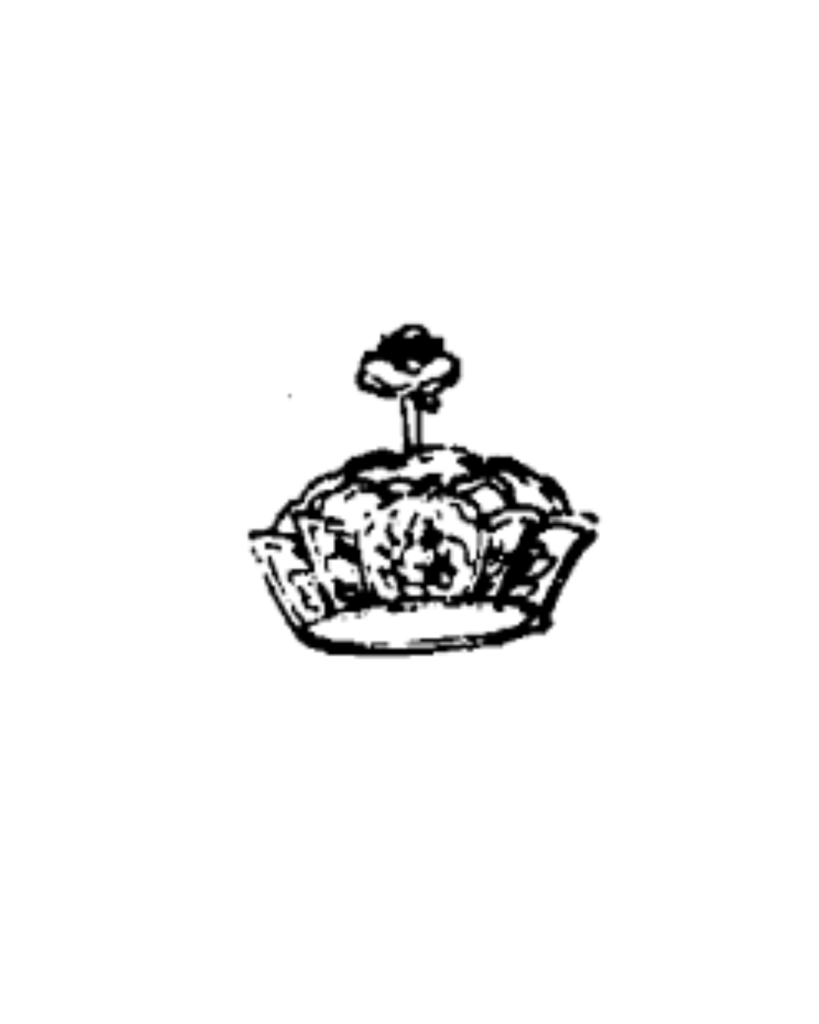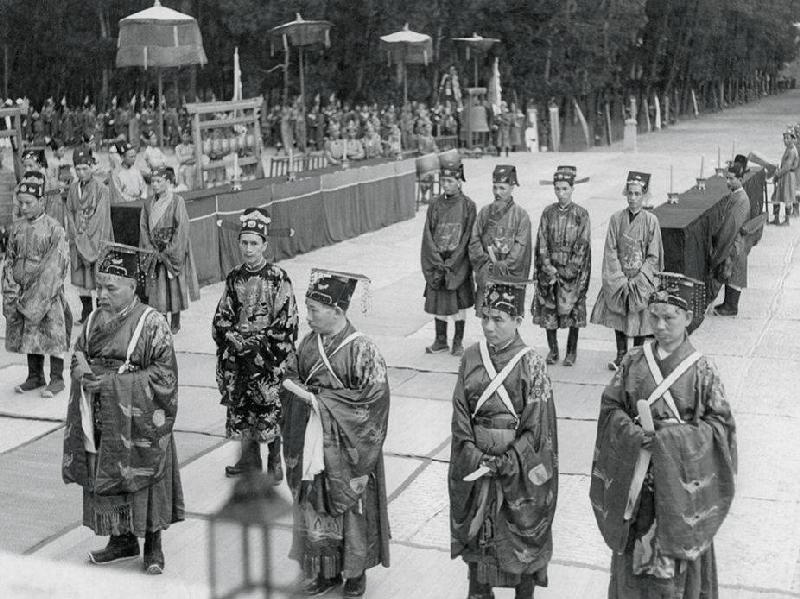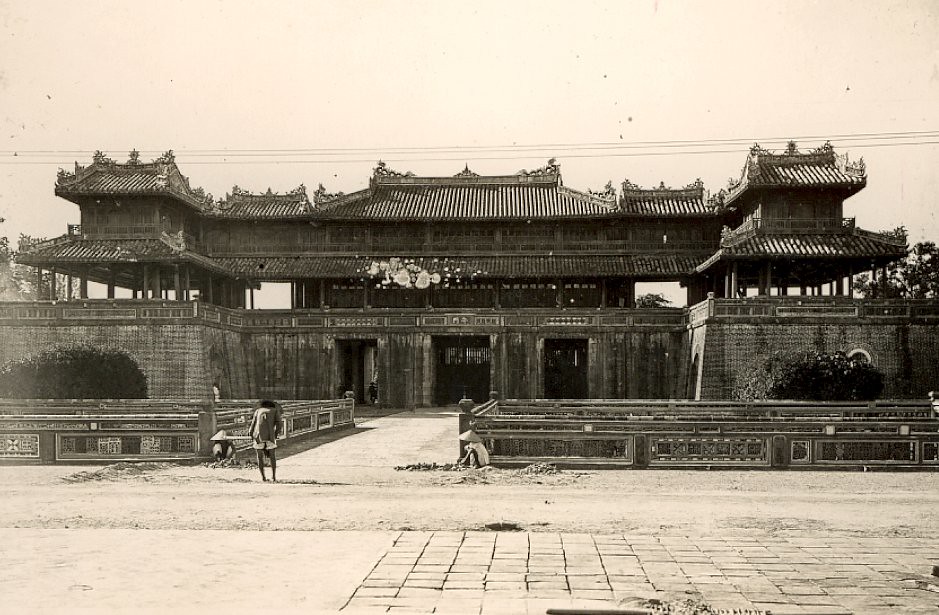Four Imperial Hats Of The Tran Dynasty: Symbols Of Power and Faith

In the history of Vietnam court, the Tran Dynasty (1225–1400) left an indelible mark, not only through its victories against the Mongol invasions but also through its court culture and imperial attire. In contrast to the preceding Lý Dynasty, the Trần Emperor’s attire was much more clearly regulated and diversified, particularly evident in the four distinct hats worn by the sovereign: the Bình Thiên hat, Quyển Vân hat, Phù Dung hat, and Đường Cân hat. Each piece of headwear was imbued with layers of meaning concerning power, religion, and the ancient Vietnamese way of life.
1. Bình Thiên hat
Bình Thiên hat (or Mũ Miện) originated during the Ly Dynasty and was retained by the Trần court as the official imperial crown. It maintained its characteristic flat top, affixed with a ceremonial tablet. From the front and back of the tablet hung twelve strings of pearls (lưu), symbolizing the cosmos and the emperor’s absolute authority. When the emperor wore the Bình Thiên hat, the drooping strings of pearls prevented subjects from looking directly upon the king’s face, thereby enhancing the solemnity and divine nature of the monarch. This hat was reserved exclusively for the most significant occasions, such as coronations and grand state ceremonies.
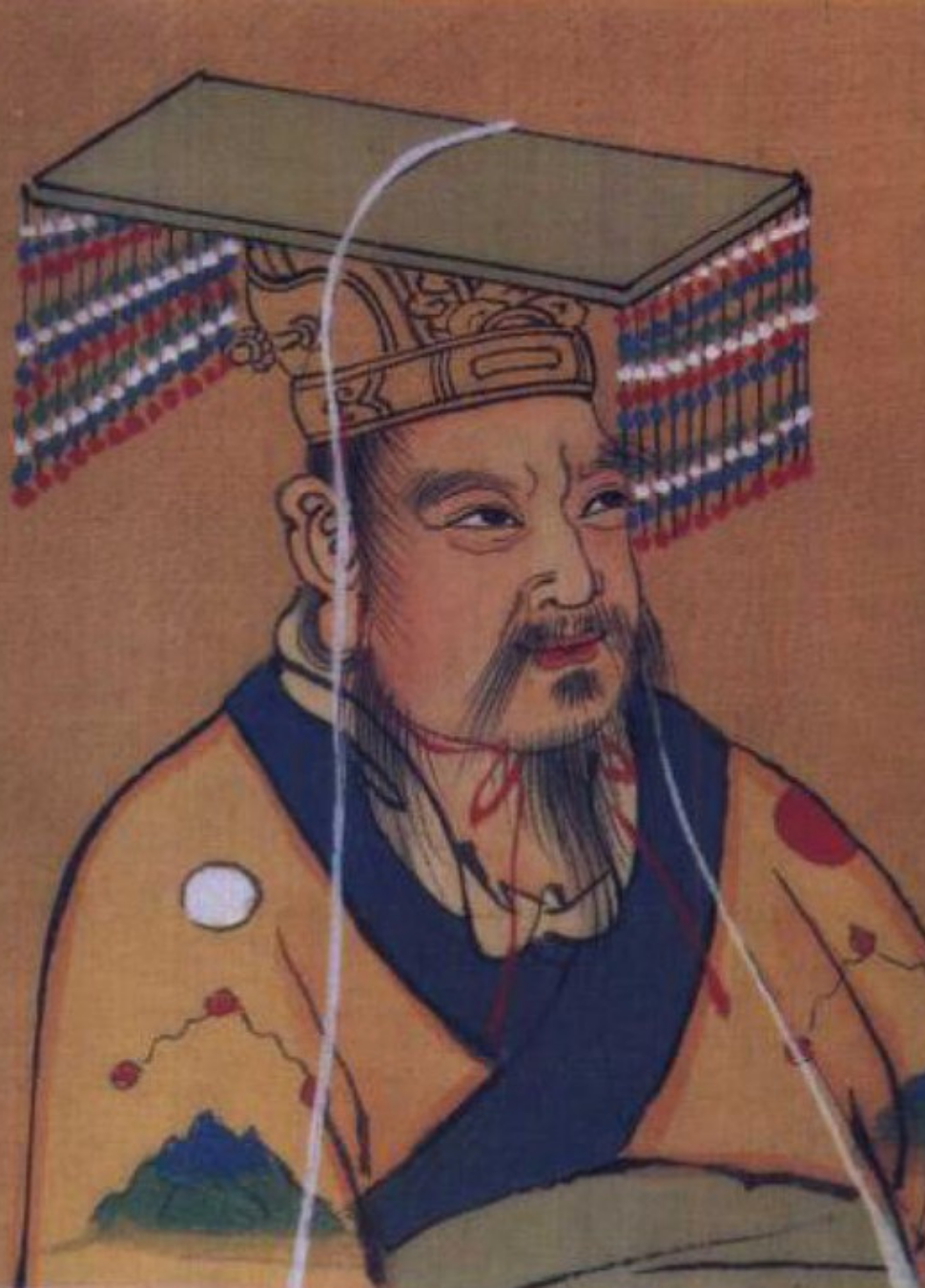
Liu Bei wearing the Mũ Miện with 12 Lưu and the Cổn robe

Sketch of the Cổn Miện attire from the Lý – Trần Dynasties
2. Quyển Vân hat
A distinctive innovation of the Tran Dynasty was the Quyển Vân hat (also called Thông Thiên hat), its name literally evoking the image of rolling clouds. This hat features a high peak, with the top curving gracefully backward, creating an elegant yet majestic silhouette. Historical sources indicate that the Emperor often wore the Mũ Quyển Vân with a red silk gown (Giáng sa bào) during Grand Court Assemblies to augment his splendor. The cloud-like, curved shape not only suggested softness but also connected the Emperor to the concept of the Heavenly Mandate, signifying him as the embodiment of Heaven and Earth.

Red Silk Robe combined with the Mũ Quyển Vân hat
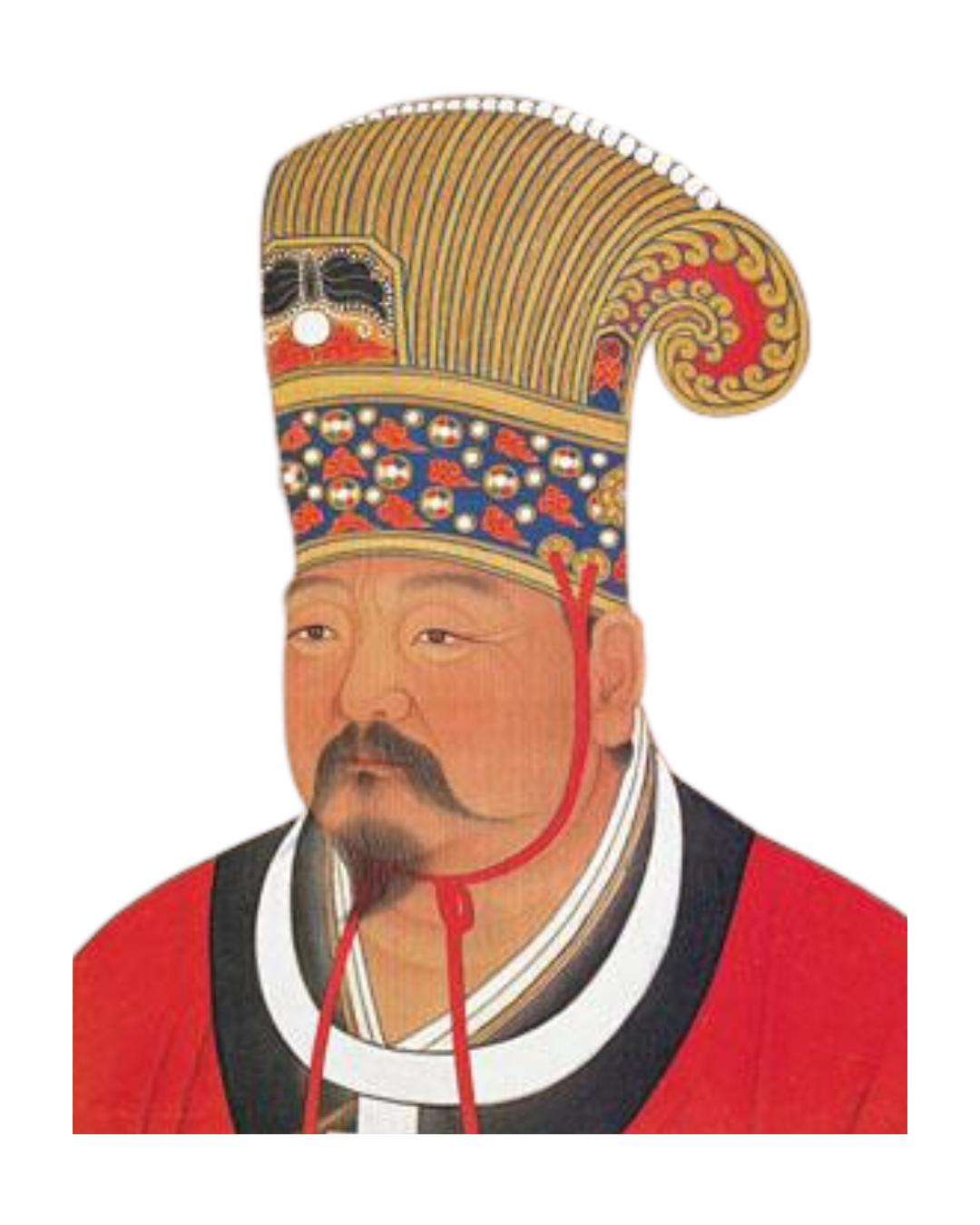
Song Emperor Xuānzǔ wearing the Quyển Vân hat
3. Phù Dung hat
The Phù Dung hat bears a strong influence from Taoism, a religion the Tran royalty greatly admired within the context of “Three Religions are One” (tam giáo đồng tôn – Buddhism, Confucianism, and Taoism co-existing). Its form somewhat resembles the headwear of Taoist priests, subtly suggesting a blooming lotus, the symbol of purity.

Illustration of the Phù Dung
By wearing this hat, the Tran Emperor appeared not only as the Son of Heaven but also as a ceremonial master in a spiritual context, bridging imperial power with religious thought. This blend of roles is captured in the anecdote where a Yuan Dynasty envoy praised Emperor Tran Minh Tong – who was wearing a yellow-collared robe, this hat, and a cord belt at a banquet – as being “ethereally refined, like an immortal, and upon returning home, he continually spoke of the Emperor’s clear and graceful demeanor.”
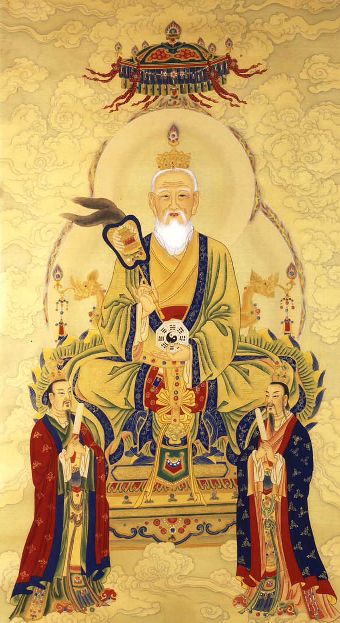
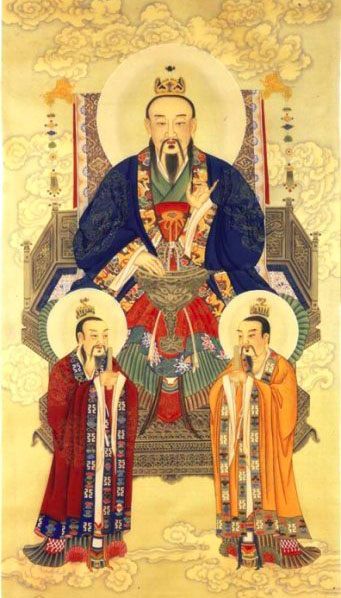
Taiqing Laojun and Yuqing Yuanshi Tianzun, two of the three Three Pure Ones in Taoism, wearing the Phù Dung hat
4. Đường Cân hat
For routine daily life and simpler court sessions, the Tran Emperor wore the Đường Cân hat. This was a hat made of black thin silk, similar in style to the Phốc Đầu hat of the Tang Dynasty (China), but with “wings” on both sides made of rattan pith bent into the shape of the Chinese character for “eight” (八). Unlike the formal gravity of the Bình Thiên or Quyển Vân, the Mũ Đường Cân carried a more understated elegance. It reflected the image of the Trần Emperor in everyday life: still regal, yet approachable and composed. While this hat style was also common among mandarins, for the Emperor, it symbolized his steady and calm approach to handling court affairs.
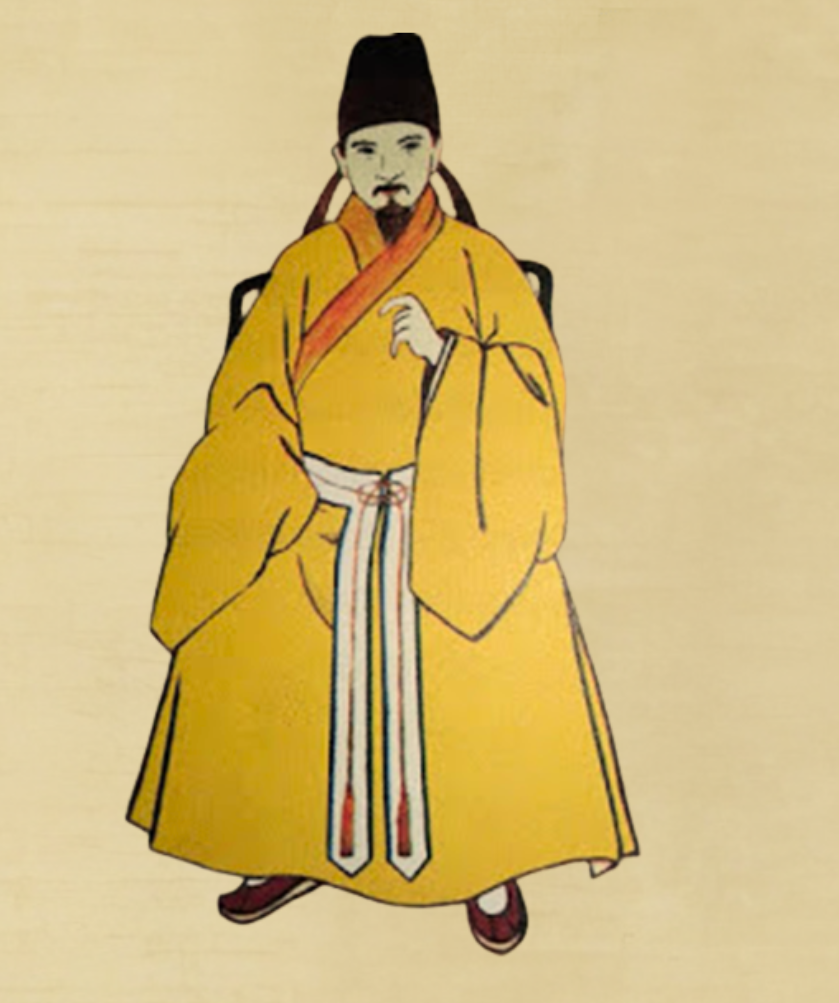
Yellow cross-collared Robe combined with the Đường Cân hat
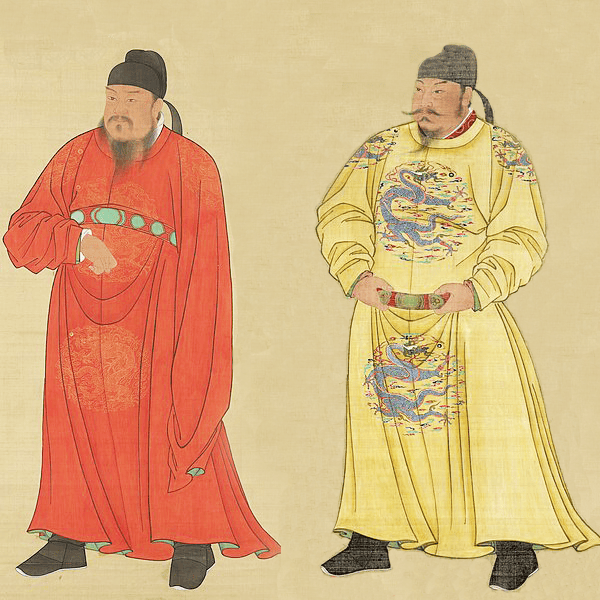
Emperor Taizong of Tang (right) and Emperor Gaozong of Tang (left) wearing the Đường Cân hat
The four imperial hats – Bình Thiên, Quyển Vân, Phù Dung, and Đường Cân – were far more than mere clothing accessories; they were powerful emblems of imperial authority. They beautifully reflected the fusion of court ritual, religious philosophy, and the aesthetic style of an entire era. By examining these hats, one can gain a comprehensive view of the external appearance, the spiritual beauty, and the profound courtly identity of Dai Viet during the Tran Dynasty.








